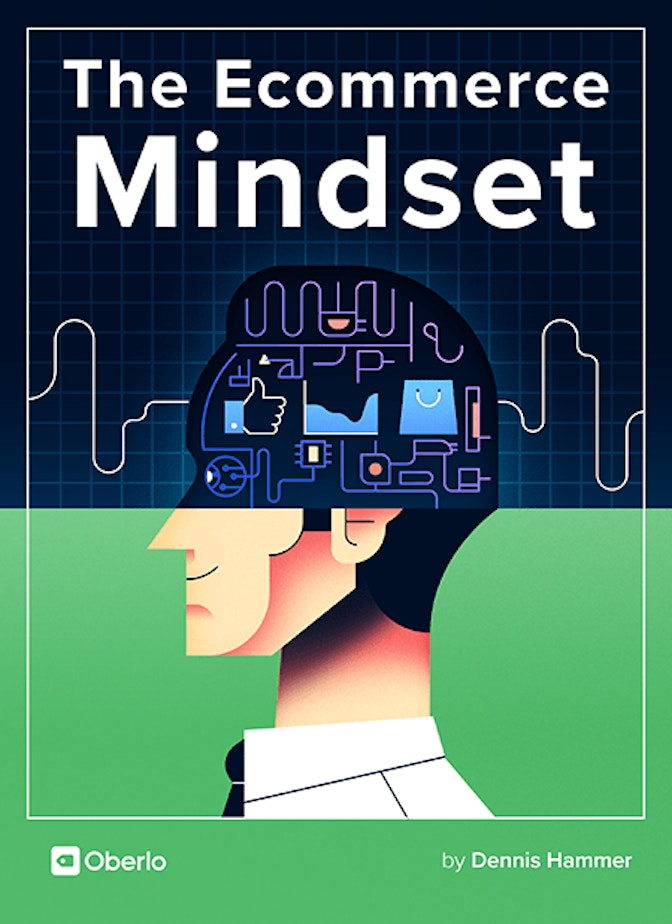If the idea of creating a plan makes you cringe, I don’t blame you.
No one dreams of writing reports, filling out spreadsheets, and documenting their work.
You want to sell products, right?
There’s a strange misconception that only “real” or “big” businesses require a plan. But you shouldn’t undersell yourself: Your business might be small or new, but it’s still serious, and it deserves careful thought.
Your plan is your foundation. It’s something solid you can turn to whenever you’re frustrated or unsure about what to do next. It’s a way to get all your thoughts, hopes, and ideas out of your own head, so you can examine them objectively.

Don’t wait for someone else to do it. Hire yourself and start calling the shots.
Get Started FreeA Word of Caution
It’s absolutely crucial to avoid falling into the trap of “analysis paralysis.” Analysis paralysis is when you overthink a decision until you’re overwhelmed by your choices and paralyzed into inaction.
According to American psychologist Herbert Simon, some people try to “maximize” their decisions, instead of settling for an available solution, so they keep seeking out a better alternative. They want the perfect solution to their problem, so they’re willing to overlook adequate solutions that are right under their nose.
Analysis paralysis usually happens when…
- You’re overwhelmed by too many options.
- Something (maybe you) overcomplicates a simple problem.
- You feel like you desperately need to pick the right choice, so you’re compelled to engage in far too much research, polling, or experimenting.
- You’re so afraid of picking the “wrong” choice, you can never bring yourself to take action.
Many early entrepreneurs struggle with analysis paralysis.
They investigate an idea or opportunity for weeks or months without ever taking a step. They worry about losing money (even when the investment is meager), wasting their spare time and then giving up, or (and this is probably the most common reason) getting something wrong in the beginning and having to start over, or keep pushing on with a handicap.
For example, many new ecommerce owners obsess over their brand name.
They want the perfect brand name with an available URL and social media profiles. They want it to be meaningful, trendy, and witty (but not cliché!). Oh, and it must be short and easy to remember.
You might come up with a name that fits these criteria, but it’s not essential, and it shouldn’t hold you back for more than a couple hours.
Few people actually care about your brand name, as long as it’s something they can pronounce. You can always change it later if you absolutely have to.
The lesson: It’s better to make a mistake and fix it later than to never take the first step at all.
So, while it’s important to create a business plan, don’t use it as an excuse to sit on your hands and never take action.
Your plan doesn’t have to be perfect. It doesn’t have to plot the entire life of your business for the next 50 years.
It just has to exist as a guide to return to whenever you lose your way.
Components of a Business Plan
Before we jump into the individual components of your plan, let’s go over a few points.
First, your plan is For Your Eyes Only right now.
Use it to plot your vision and keep yourself on track. It doesn’t have to be a formal document. A Google Doc with bullet points will do. For now, your goal is to put your thoughts, ideas, and knowledge on paper.
Second, you may have noticed we’ve skipped several components of a traditional business plan.
A business plan usually has sections like “Executive Summary” and “Financial Projections.” Sure, this type of information has value, but not right away (unless you’re seeking outside funding), so you can set it aside for now.
Third, your plan is a living document.
In other words, it’s not set in stone forever. It should absolutely change over time (specifically, whenever you learn something new or change directions).
Remember: Smart entrepreneurs adapt!
Finally, you can use this plan as a starting point once your business starts growing.
If you ever need to hire people, take on investors, or build deeper relationships with your suppliers, the plan can be something useful to show them because it shows you’re serious and committed.
So let’s dive right in.
Open a document and jot some notes down for each section listed below.
Don’t go overboard. You don’t need flowing paragraphs of legalese or pages full of intricate details. Just get your thoughts out of your head.
1. Business Description
This seems simple enough, but it’s important because it’ll help keep you focused.
Briefly explain your business concept (what you do and how you do it).
Yours might look something like this: “I sell products to my customers using Shopify and Oberlo.”
2. Mission Statement and Value Proposition
This section gives a high-level overview of your business, your plans, your values, and what sets you apart from your competition. The goal is to determine your value proposition: The one thing that makes your customers fall in love with your brand.
Answer the following questions:
- Why are you in business? What do you hope to accomplish?
- Who are your customers? Why?
- What does your company value?
- What benefits do you offer your customers?
- What do you want to be known for?
- What are you good at?
- How are you different from your competitors?
- Do you have any advantages over them?
3. Goals
Many entrepreneurs make the mistake of diving headfirst into tactics. But you shouldn’t take a single step until you set a few goals, because your goals will indicate the most suitable tactics you can use.
Specific: They should be clear and targeted.
Measurable: They should be easy to track (ideally with a number).
Achievable: They should be possible (not outlandish or unrealistic).
Relevant: They should relate to your broader business objectives.
Timely: They should have clear deadlines.
Here’s an example of a poorly made goal:
I want to be the premier streetwear brand.
This goal isn’t specific, measurable, or timely. It may be relevant and achievable, but the goal doesn’t give us enough information to determine whether it actually is.
Compare that to this well-thought-out goal:
I want to sell 100 pairs of shoes in the next 6 months.
This goal is excellent because it’s highly specific, measurable, includes a time factor, it’s not impossible to achieve, and it obviously relates to the business.
4. Target Customers
In this section, compile everything you know about your ideal customers (your “buyer personas”).
Include the following for each type of customer:
- Name (with a stock photo. It helps!)
- Basic demographics
- Age
- Gender
- Job title/industry
- Geographic location
- Income
- Family makeup
- Education
- Purchasing power
- Any other useful data points
- A brief description of who they are
- Mindset
- What are the customer’s goals?
- What are their problems and pain points?
- What solutions do they expect from your products?
- Customer journey: Describe your customers in each phase of their buying journey.
- Awareness stage (when they recognize their own need for your product)
- Consideration stage (when they start searching for products like yours)
- Decision stage (when they compare different products)
- What type of lifestyle do they lead?
- Do they use any special terms or lingo?
- What types of entertainment do they consume?
- Include any other useful information.
This information will help you create copy and images that appeal to your customers and speak to them in their language.
Remember: Customers who feel like you know them well are more likely to buy.
This is arguably the most important part of your plan. Do NOT neglect this step.
In fact, you should return to this part of your plan regularly (at least once a week). Update it with new information about your customers, and log their preferences and habits. Over time, this information will become indispensable.
5. Products
Briefly describe the products you’ll sell on your site as well as the criteria you used to choose them. This will help you select additional products in the future.
For instance, you might say, “We sell trendy street shoes with urban influences in the $100-to-$200 range.”
Think about your products from your customer’s perspective.
Why do they hold value? Why would someone buy them? Why would someone buy your products, and not your competitors’? Record your answers to these questions.
6. Operational Plan
This section describes the day-to-day operations of your business.
As a store owner, most of your daily work will revolve around marketing–but other tasks will still demand your attention on a daily basis.
For example, you should plan to…
- Check your orders twice a day to either fulfill them manually, or quickly verify that no errors occurred with the auto-fulfillment process.
- Check daily sales numbers and review automated reports.
- Respond to customer complaints and questions.
- Check your finances to make sure money is flowing in both directions (in from customers and out to your supplier).
Further, just because there aren’t any hard deadlines for your marketing work doesn’t mean you should leave it unscheduled.
7. Competitive Analysis
In this section, you’ll learn how to spy on your competitors to identify what they do that works for them and how you can compete.
Start by identifying your main competitors. Google around a bit using keywords your target customers would use to find similar stores.
Examine the following for each competitor:
- Their value proposition (What makes them unique?)
- The market and the customers they serve (How do they overlap with yours?)
- Their product attributes (How do they differ from yours?)
- Their pricing strategy (How does it compare to yours?)
- How they promote and distribute their product
- Their return and refund policies, terms and conditions, etc.
- Their shipping policy and related terms
- Their mailing list (How do they gather subscribers?)
- Their special deals, coupons, sales strategy, etc.
- How might your customers compare your competitors’ products to your own?
- Finally, list any strengths, weaknesses, as well as opportunities and threats (SWOT analysis) worth considering.
[highlight]For a more granular look at your competitors, check out this post: 8 Tools to Research Your Competition.[/highlight]
8. Promotions
Undoubtedly, you’ll learn of more competitors throughout the course of your business. Each time you become aware of one, add them to your analysis.
In this section, jot down ideas about how you plan to promote your store. This component will change more than any other section of your plan, so don’t worry about getting it perfect just yet. Start by defining the channels you intend to use.
You might promote your store using…
- Content marketing and SEO (blogging)
- Social media
- Paid advertising (Google and Facebook ads)
- Affiliate marketing
- Email marketing
- Direct mail or print
- Cross-promotions and partnerships
- Other methods
Next, add details. If you intend to build cross-promotional partnerships, list some brands you plan to approach. If you plan to generate blog content, outline a few pieces of content you want to create. Make a special note of any techniques similar brands have had success with.
9. Retention
One of the most important parts of running an ecommerce business (or any business, really) is retaining the customers you acquire.
According to the Harvard Business Review, acquiring a customer can be 5 to 25 times more expensive than retaining one.
Moreover, Bain & Company indicates that increasing your customer retention rate can increase profits from 25% to 95%.
These aren’t numbers you can just ignore. It’s imperative you have a strategy in place to prompt repeat sales.
[highlight]Email marketing is a fantastic way to stay in touch with old customers. Social media is useful too if you can dedicate yourself to creating quality social media content that engages people after they’ve purchased. [/highlight]
A Final Word of Caution
As you can see, your plan includes a ton of useful information to guide your business. You can turn to it whenever you feel lost.
Can you dive into ecommerce without a plan?
Sure.
Lots of entrepreneurs do just that–but it’s a mistake.
If you lack a plan, you lack direction. Even if you don’t know where you want your business to take you, your plan (at the very least) serves as a repository of information you gather over time, and it’s a record of the solutions you’ve created to specific problems.
As discussed, however, don’t spend too much time on your plan.
You don’t want your planning phase to derail your momentum.



